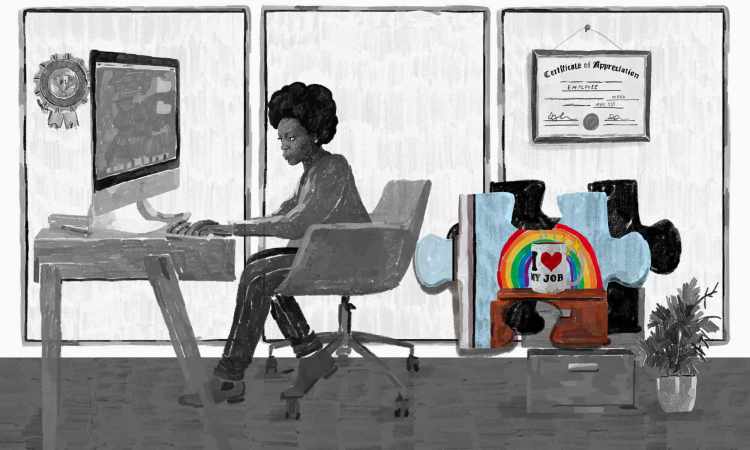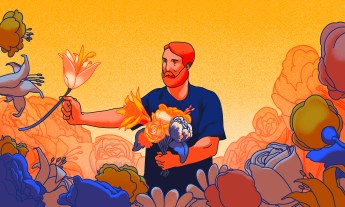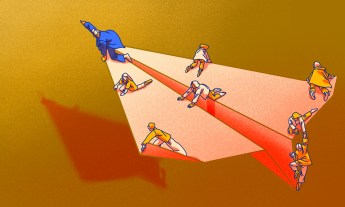
To make the greatest impact at our jobs — and also feel the greatest satisfaction — we need to tap into work’s deeper meaning, says Leah Weiss, a compassion expert and researcher.
For humans, purpose can be a matter of life and death. As Holocaust survivor Viktor Frankl wrote in Man’s Search for Meaning, “Life is never made unbearable by circumstances, but only by lack of meaning and purpose.” Purpose is something we do or something we create — not something we buy, inherit or achieve. Purpose could be any direction in which we’re heading with some degree of intention. It’s a far-reaching, steady goal, something personally meaningful and self-transcending that, ideally, shows up in our lives every day.
People who consider their work to be a calling tend to be more satisfied than those who think of their work as “just” a job.
Purpose boosts our capacity to make the greatest impact in the work we do and to connect with other people across cultures and contexts. We feel energized, motivated and expanded when we have a sense of purpose. According to Yale School of Management researcher Amy Wrzesniewski, people who consider their work to be a calling — in other words, they felt their work had purpose — tend to be more satisfied than those who think of their work as “just” a job. Having a calling is not restricted to people in executive positions. For example, Wrzesniewski has interviewed hospital janitors who believed they had a calling — they saw their work as more than cleaning; it was about helping support patients’ healing.
Having a purpose can help us overcome obstacles, a benefit that makes a difference at work. Cornell University social psychologist Anthony Burrow studies how purpose impacts behavior. One of his experiments looks at what motivates students to climb a steep hill on campus known as the Slope. The study’s goal was to identify the correlation between a student’s sense of purpose and the degree of difficulty with which he or she regarded the climb, to understand why some students make it up the Slope while others don’t. After climbing the hill, study participants were met at the top by a researcher who asked them to estimate the slope and the effort it took to climb it.
Participants who reflected on their larger purpose before climbing the hill estimated the slope and the effort to climb it as lower than if they were asked about a short-term goal. Those who reflected on a neutral topic estimated the hill as steepest and the effort to climb it as highest. What was interesting was that for people with either higher dispositional purpose — who perceived themselves as high in purpose in general — or who were asked to reflect on purpose briefly, the link between effort and slope overestimation was diminished. They still saw the slope as challenging, but they were more accurate in sizing up the challenge than the less-purposeful participants, who overestimated the size of the slope.
If we apply these findings to the workplace, we can see that immediate, short-term goals may not be enough to motivate us to correctly assess the size of a difficult task. So if we want to understand what we are trying to do (a key part of actually being able to do it), we have to find ways to keep our greater purpose and vision in mind.
For some of us, a clear financial upside to our work gives meaning; for others, it might be in our work relationships, participating in innovation, or serving people in need.
A student named Luke told me about a metaphor that his father used to convey the importance of purpose: a jigsaw puzzle. Luke grew up doing puzzles with his family, including his brother. As the boys got older, their father would hide the box top and challenge his sons to finish the puzzle without it. Unsurprisingly, that was extremely difficult.
Purpose is like that picture on the cover of the puzzle box. We spend a lot of time staring at the pieces and trying to fit them this way or that, but it’s the picture on the cover of the box that guides us. This is our bigger picture, the meaning of our life, our purpose. To complete the puzzle, we need to reference that box top more often than we might expect.
Work is a big part of everyone’s puzzle, of course. During the day, can you envision where the piece you’re holding in your hand at the moment, or at any moment, fits into the bigger picture? In other words, does it really matter whether you do this thing you’re about to do? When you wake up in the morning, or on a Sunday night as you contemplate the workweek ahead, do you think it matters whether you show up for work? It should matter. The likelihood of it mattering greatly increases if you believe that what you do with your time on the job makes sense, that it’s worth it.
“Worth it” depends on the person and on the day. For some of us, a clear financial upside to our work gives meaning. For others, the meaning is in belonging: work relationships and culture are our reasons for getting out of bed. Perhaps one’s meaning is found in participating in innovation, or serving people in need. For many if not most of us, it’s a mix of things.
By shifting our perspective, we can achieve a greater sense of purpose without changing what we’re doing.
Even those who’ve known the pleasure of deeply purposeful work can lose that feeling. Maybe we’re burnt out from the acute stress of a demanding job or desensitized through the stress of daily life in general. We may be so harried by routine tasks and demands, distracted by habits, our noses to our to-do lists, that we don’t notice how we feel — or conversely, we are so caught up in our feelings, whether good or bad, that we lose sight of the big picture. We may have strayed from our purpose gradually, one setback (or success) at a time. Maybe we’re disillusioned from chafing against broken systems for too long, or we feel undervalued or unappreciated.
No matter how lost or stuck you feel, though, you can get back on purpose. The way we think about our daily tasks can alter our relationship to our work. So, by shifting our perspective, we can achieve a greater sense of purpose without changing what we’re doing. Try this out by picking one upcoming task on your calendar — maybe it’s attending a meeting, giving a presentation or filling out expense reports. Think about the task, first, as part of a job, then as a career, and finally as a calling. Jot down or make mental notes for each of these states. Reflect on how you approach the task when you think of it as a duty for a job, versus something you do as part of a calling. Does your motivation change? Do you feel a shift in excitement? Practice doing this with a wider swath of your tasks. Take an entire day, and reframe it as a calling. Pay attention to how a shift in your perspective impacts your sense of joy and purpose.
You also may feel you don’t know what your purpose is. One way to figure it out is to pick a manageable period of time, such as one week, and notice when you feel most on purpose and what you’re doing at the time. Write down these associations in a journal or document. You might wonder: How will I know when I’m on purpose? What does it feel like? It can be a feeling of vitality, when making an effort leaves us energized rather than drained. One of my students noticed that she was “on the edge of her seat” at a lecture and realized that it spoke to what she cared about most. Purpose can also make us feel calm, because when what we’re doing lines up with our higher purpose, our inner critics have less to talk about. At the end of the week, review your notes. Do you see any pattern to your sense of purpose? Does it tend to come with certain categories of things? Can you make any generalizations about your purpose from these specific instances?
Reflecting on the inspirational qualities of a Desmond Tutu or a Ruth Bader Ginsburg will shine a light on ourselves — that person functions as a mirror for our best self.
Alternatively, think of people you admire and trace what you like about them back to your own values. Reflecting on the inspirational qualities of a Desmond Tutu or a Ruth Bader Ginsburg or a Beyoncé will shine a light on ourselves. In the traditional Buddhist metaphor, the person we look up to functions as a mirror for our own best self. Or, closer to home, think about who you admire at work. What is it about this person? Aspirational figures don’t have to be perfect; just focus on the qualities you admire. (If you can’t think of anyone you admire at work, that in itself might tell you something.)
If the picture you have of your purpose is nonexistent or fuzzy, give yourself time to experiment with these exercises. Don’t panic if a clear vision doesn’t immediately present itself. Purpose is ongoing and iterative — it’s a process of seeing what works, and what doesn’t, for you and your life.
Excerpted with permission from the new book How We Work: Live Your Purpose, Reclaim Your Sanity, and Embrace the Daily Grind by Leah Weiss. Published by Harper Wave, an imprint of HarperCollins Publishers. © 2018 Leah Weiss.
Watch the author’s TEDxTraverseCity Talk here:












